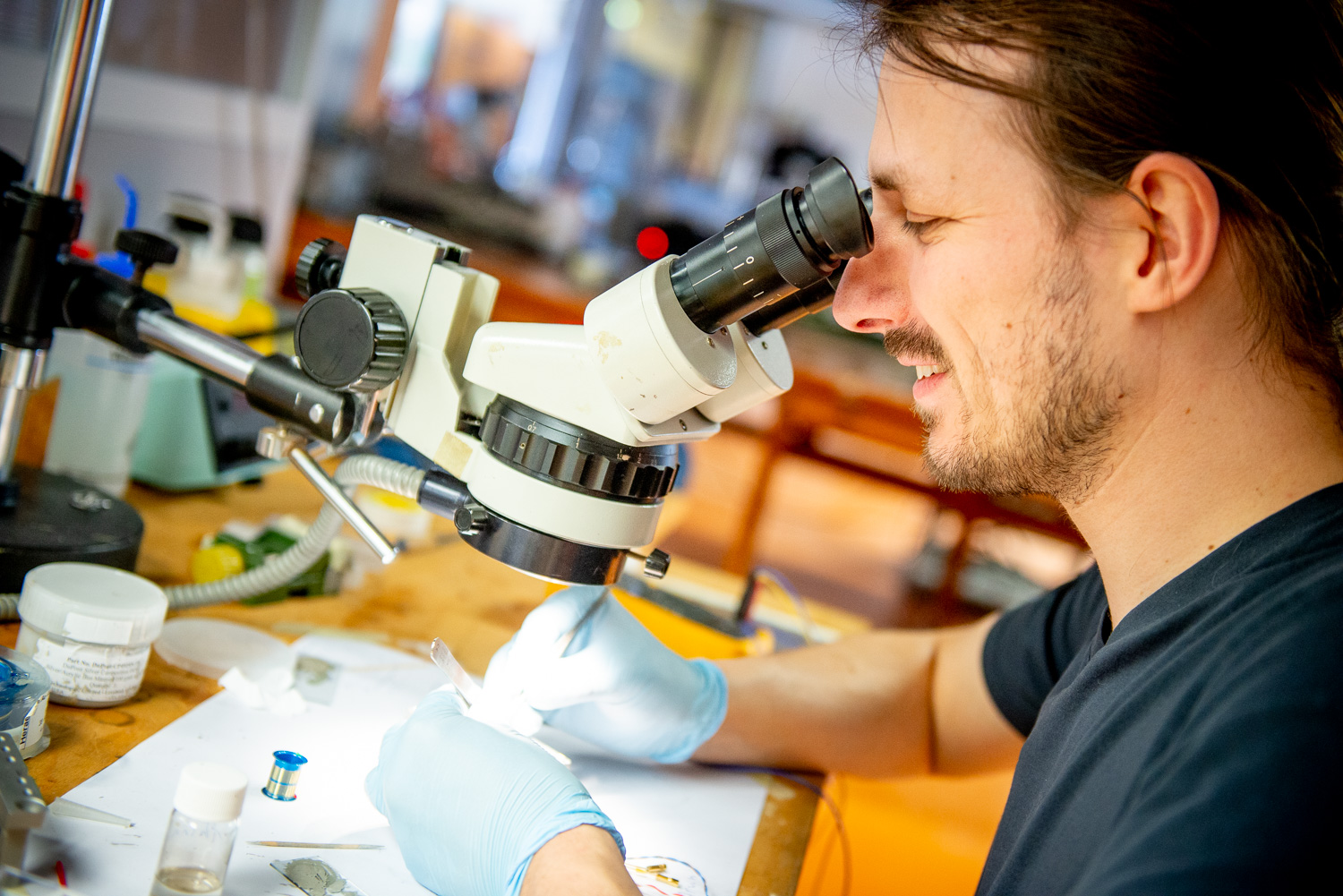Breaking promising materials, to better understand their properties

Researcher Arwin Kool in the lab
When you think of the phase in which a material can exist, you probably quickly come up with these three: liquid, gas, and solid. But these phases can exist in many different states. In the solid phase for instance, at least 30 of these states exist. Some of them are very interesting for future applications, like new types of electronics. How the different states can be influenced is interesting as well. But studying these processes can be quite complicated.
Arwin Kool, scientist at HFML-FELIX, is one of the people working on this. ‘What I essentially do in the lab is expose interesting materials to all kinds of extreme conditions and then I watch – simply put – when they break.’ These conditions might include temperature, pressure, or a strong magnetic field. ‘For this, we have various research setups in our facility, with extremely strong magnets. In these magnets, which were developed here in the lab, you can place a sample of a material and then you can study how it reacts when you adjust these conditions.’
Superconductivity
Such a sample of a material has to be very small. Even though the magnet setups are very large, the research space in the magnets is only a few centimeters in diameter. The materials that Kool studies are not random. Often they have already been described as interesting in previous research. This means that important data is already available. For example: a diagram describing the states of the material. ‘Then I can start playing with that. By looking at conductivity, among other things. Because for many materials we know they show something exciting, like superconductivity, but we often don’t yet know how these properties work and how we can control them.’
Pushing and pulling
In his research, Kool also looks at mechanical influences. For this, he places a very small piece of material on a specially designed device, no larger than a 2 euro coin. With this device, even fragile materials can be carefully stretched and compressed. And then you can again ask the question: how does this influence the behavior and resistance of the material? ‘When you start thinking about applications, this could be the preliminary work for new forms of on/off switches in materials. Perhaps it is possible to control the behavior of a material with a switch that responds to magnetic fields, or perhaps to a gentle push.’
Now, ‘watching when it breaks’ might sound too crude for the very precise work that Kool does in his experiments. ‘The effects can be very small and they are not always black-and-white. Often it is a combination of factors that causes a change of state. And then there is also interaction between the different states. Before we can start working with promising materials, we need to know how this works very precisely.’
Exotic properties
One of the materials Kool is looking at is purple bronze. An extremely complex and exotic one dimensional material. It doesn’t quite follow the standard laws of physics. This type of 1D material should be fully insulating, but in one direction purple bronze turns out to have good conductivity. ‘These kinds of materials are actually a whole new direction in physics. And again, here you can look: can superconductivity occur in this material? And what is needed for that to happen? What is the effect of magnetism on this interesting material? Or: what happens if you add mechanical influences?’
Due to the special structure of purple bronze, Kool sees in his experiments that mechanical forces can have different effects, depending on direction. ‘If you pull in the length of the chain structure of the material, nothing happens, but if you press perpendicular to it, the signal I measure changes enormously. So there is something very interesting happening there.’ Something interesting that might someday lead to much more efficient supercomputers, or well-functioning quantum electronics.